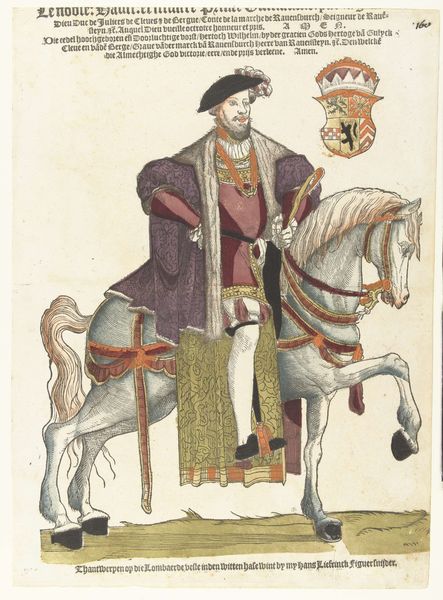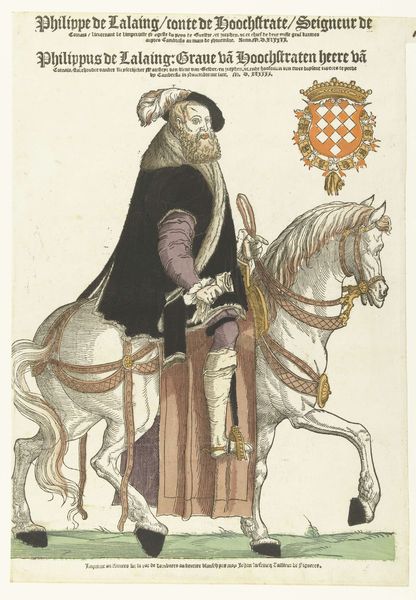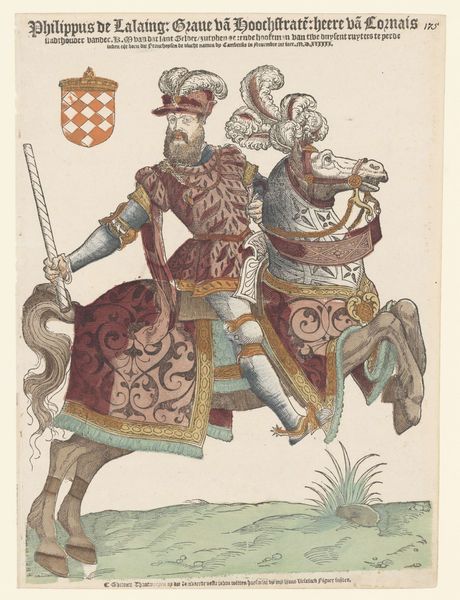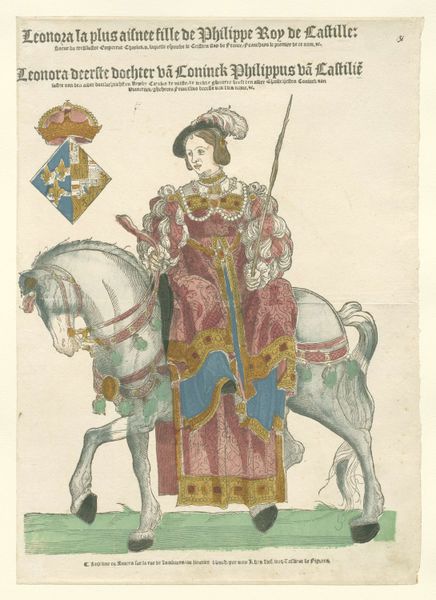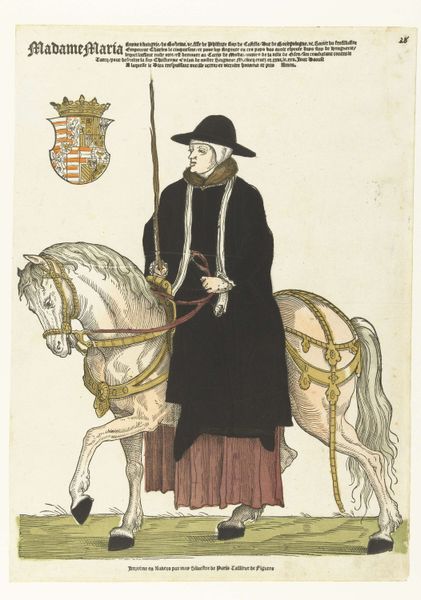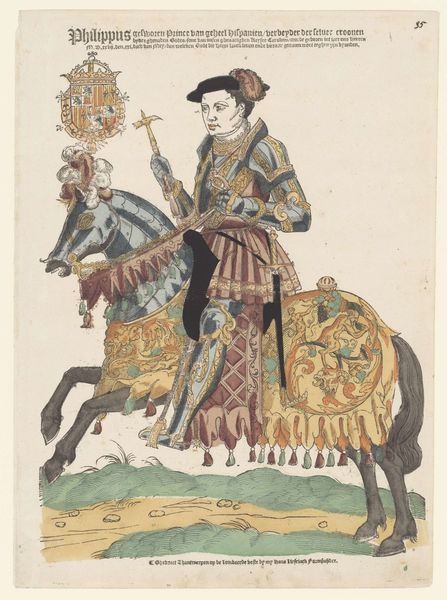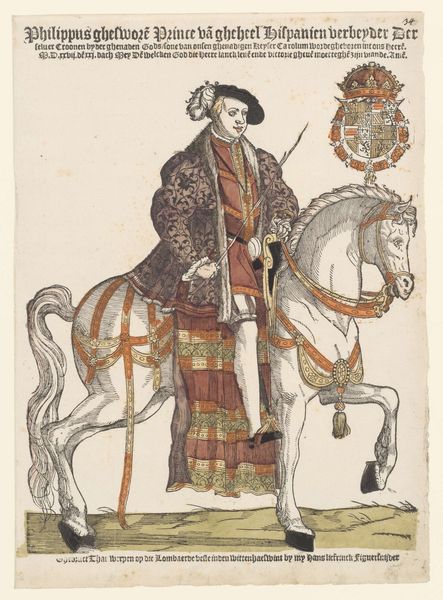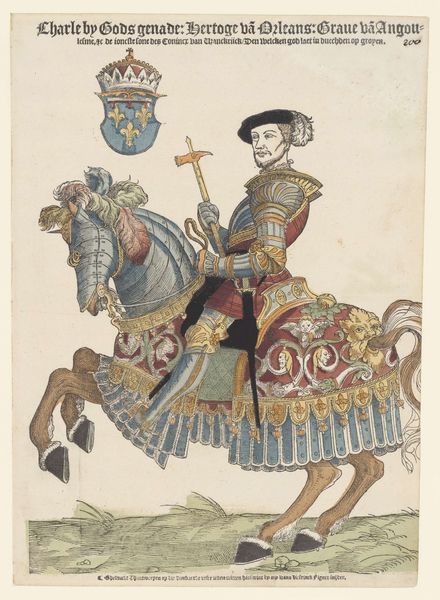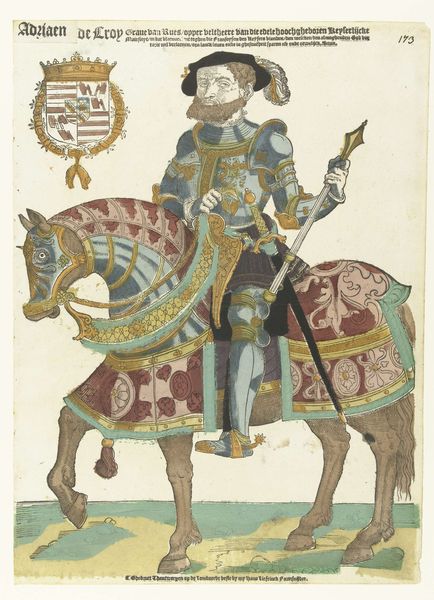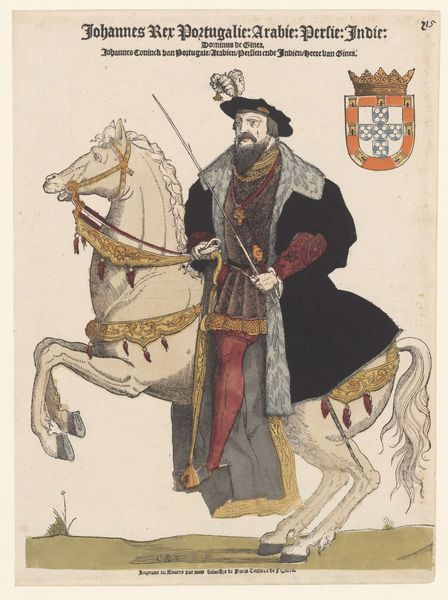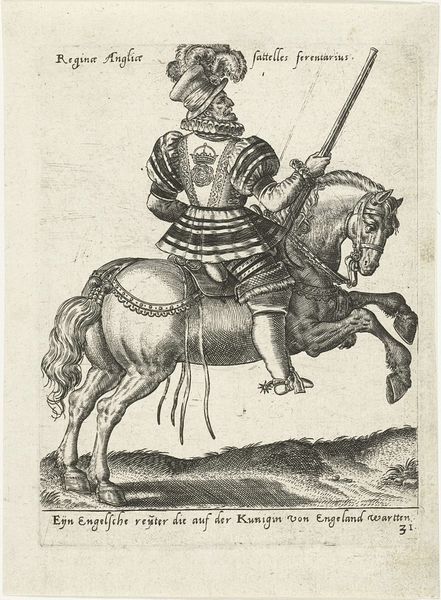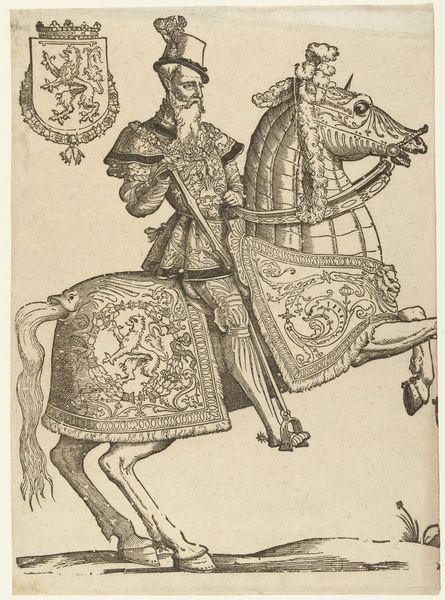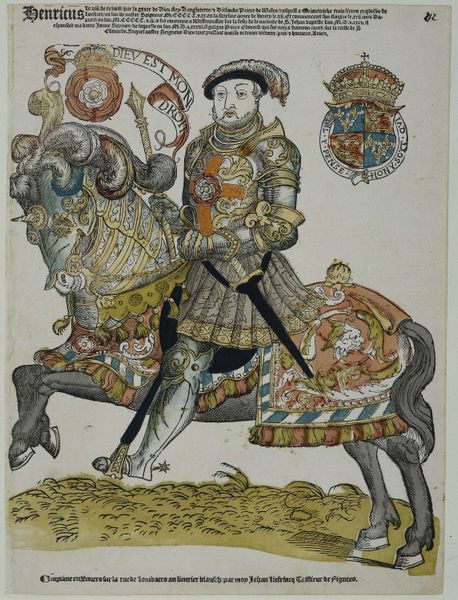
print, engraving
#
portrait
# print
#
old engraving style
#
geometric
#
history-painting
#
italian-renaissance
#
engraving
Dimensions: height 405 mm, width 300 mm
Copyright: Rijks Museum: Open Domain
Curator: Look, this print offers a vivid, albeit flattened, portrayal of Emanuel Philibert van Savoye on horseback. It dates back to sometime between 1546 and 1550, and it's attributed to Cornelis Anthonisz. The engraving is currently held in the Rijksmuseum's collection. Editor: It's…remarkably stiff, isn’t it? Like a paper doll rendition of power. I immediately think about the process of making such an image and its inherent limitations given the material—how does one convey dynamism using engraving techniques? Curator: Well, consider the context. Engravings like this one would have served as propaganda, essentially. The print, in multiple copies, travels much more easily than the Duke himself, disseminating a very controlled image of leadership. Editor: Absolutely. The act of reproduction itself is so telling. Each line meticulously carved, then pressed, multiplied and distributed... It’s a powerful means of crafting and controlling a narrative. And that elaborate attire, those stiff textiles…it's about broadcasting wealth and command, and labor put into that aim. I wonder about the dye, where was the material of the inks were sourced and where production actually took place, Curator: It speaks to the artistic exchange happening then, especially as Italian Renaissance ideas made their way north. There’s that attempt at grandeur in his bearing, an almost forced elegance despite the medium, and there are also geometrical decorations. I love that. What's the social function, then? Is this accessible? Affordable? How do people take and spread his political vision, exactly? Editor: Right. An interesting element is that it’s in colour. I would suppose that those colours will highlight specific things in his coat of arms for his lineage to emphasize that message again to everyone. Curator: Ultimately, despite any stiffness, it remains a captivating testament to how power could be packaged and circulated in the 16th century. It speaks volumes. Editor: Precisely! Thinking about distribution, consumption, and, fundamentally, the materials makes us reconsider how this era perceived its leaders. What materials did the average person handle on a daily basis, for instance? Curator: It has been insightful to rethink the artwork!
Comments
No comments
Be the first to comment and join the conversation on the ultimate creative platform.
